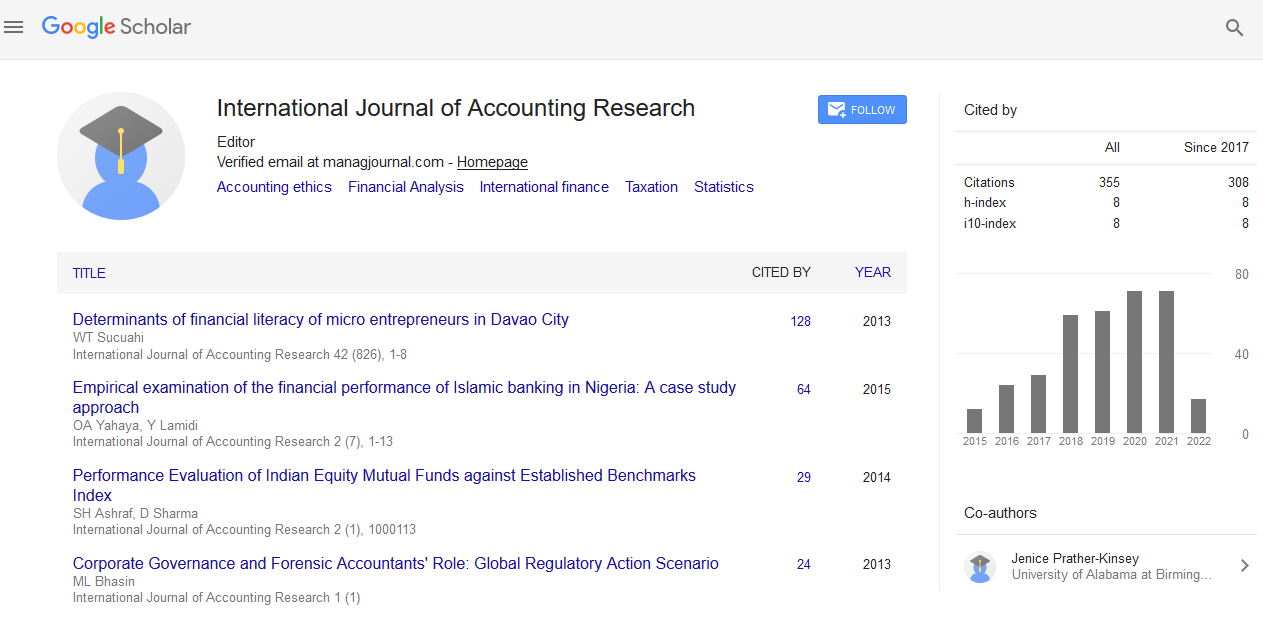Indexed In
- Open J Gate
- RefSeek
- Hamdard University
- EBSCO A-Z
- Scholarsteer
- Publons
- Euro Pub
- Google Scholar
Useful Links
Share This Page
Journal Flyer

Open Access Journals
- Agri and Aquaculture
- Biochemistry
- Bioinformatics & Systems Biology
- Business & Management
- Chemistry
- Clinical Sciences
- Engineering
- Food & Nutrition
- General Science
- Genetics & Molecular Biology
- Immunology & Microbiology
- Medical Sciences
- Neuroscience & Psychology
- Nursing & Health Care
- Pharmaceutical Sciences
Commentary - (2024) Volume 12, Issue 2
Federated Identity Systems and Blockchain Technology
Trilivan Chisrtan*Received: 03-Jun-2024, Manuscript No. IJAR-24-26328; Editor assigned: 05-Jun-2024, Pre QC No. IJAR-24-26328 (PQ); Reviewed: 20-Jun-2024, QC No. IJAR-24-26328; Revised: 27-Jun-2024, Manuscript No. IJAR-24-26328 (R); Published: 05-Jul-2024, DOI: 10.35248/2472-114X.24.12.381
Description
In today's digital age, the management of online identities has become a critical issue. With the increasing number of services and platforms requiring user authentication, the need for efficient, secure, and user-friendly identity management systems is more important. Federated identity systems and blockchain technology have emerged as key solutions to address these challenges, offering unique advantages that can revolutionize the way they handle digital identities.
Federated identity systems: An overview
Federated identity systems allow users to authenticate across multiple systems and domains using a single set of credentials. This means that a user can log in to various services using one Identity Provider (IdP) instead of creating separate login credentials for each service. Examples of federated identity systems include Single Sign-On (SSO) solutions like those provided by Google, Facebook, and Microsoft. The primary advantage of federated identity systems is the convenience they offer to users. By reducing the number of credentials users need to remember and manage, these systems simplify the authentication process. They also enhance security by minimizing the risk associated with password reuse across different services. However, federated identity systems are not without their drawbacks. They often rely on centralized identity providers, which can become single points of failure. If the identity provider is compromised, all services relying on that provider are at risk. Additionally, centralized systems can raise privacy concerns, as the identity provider has access to a vast amount of user data.
Blockchain technology: Enhancing identity management
Blockchain technology, known for its decentralized and immutable nature, offers a compelling solution to the limitations of traditional federated identity systems. By manipulating blockchain, identity management can be made more secure, transparent, and user-centric. In a blockchain-based identity system, user identities are stored on a decentralized ledger. This eliminates the need for a central authority, distributing trust across a network of nodes. Each transaction on the blockchain is encrypted and linked to the previous one, creating an immutable chain of records. This makes it extremely difficult for petty actors to alter or around with identity information.
One of the key benefits of blockchain-based identity systems is enhanced security. Since there is no central point of failure, the risk of large-scale data gap is significantly reduced. Furthermore, users have greater control over their personal information. They can choose what information to share and with whom, enhancing privacy and compliance with data protection regulations like General Data Protection Regulation (GDPR). Blockchain technology also facilitates the creation of self- Sovereign Identities (SSI), where users own and control their digital identities without relying on any intermediary. SSIs can be used across different platforms and services, providing the same convenience as traditional federated identity systems but with added security and privacy benefits.
Integrating federated identity systems and blockchain
The integration of federated identity systems with blockchain technology can create a powerful hybrid solution that combines the best of both worlds. By using blockchain as the underlying infrastructure, federated identity systems can become more secure. In such a hybrid model, identity providers can issue verifiable credentials on the blockchain. Users can then present these credentials to various services without the need for repeated authentication processes. This reduces the reliance on centralized identity providers while maintaining the convenience of federated identity systems. Moreover, blockchain can enhance the trust of identity providers. Each interaction and credential issuance can be recorded on the blockchain, creating an auditable trail of activities. This increases transparency and accountability, reducing the likelihood of fraudulent activities.
Challenges and future directions
Despite the potential benefits, the integration of federated identity systems and blockchain technology is not without challenges. Scalability remains a significant concern, as blockchain networks can become slow and expensive as the number of transactions increases. Additionally, there are interoperability issues to address, ensuring that different blockchain platforms and identity systems can work seamlessly together. Legal and regulatory considerations also play a significant role. The adoption of blockchain-based identity systems must comply with existing laws and regulations, which can vary significantly across different jurisdictions.
Citation: Chisrtan T (2024) Federated Identity Systems and Blockchain Technology. Int J Account Res. 12:381.
Copyright: © 2024 Chisrtan T. This is an open-access article distributed under the terms of the Creative Commons Attribution License, which permits unrestricted use, distribution, and reproduction in any medium, provided the original author and source are credited.


